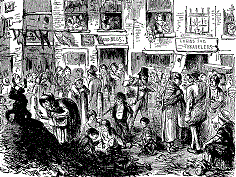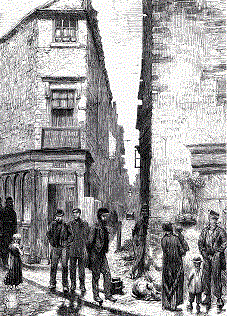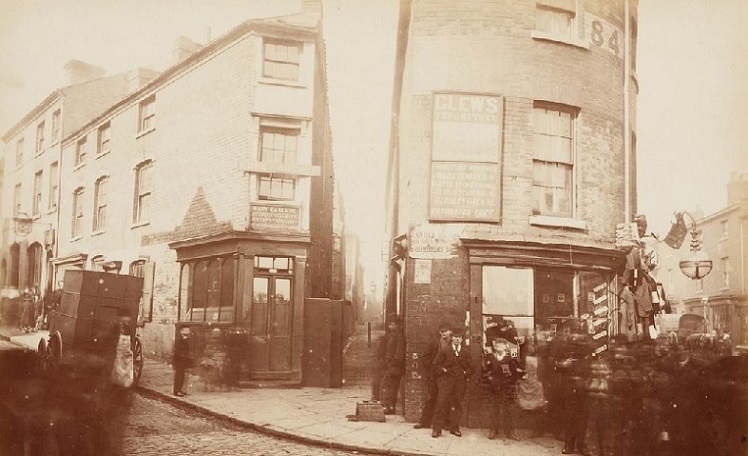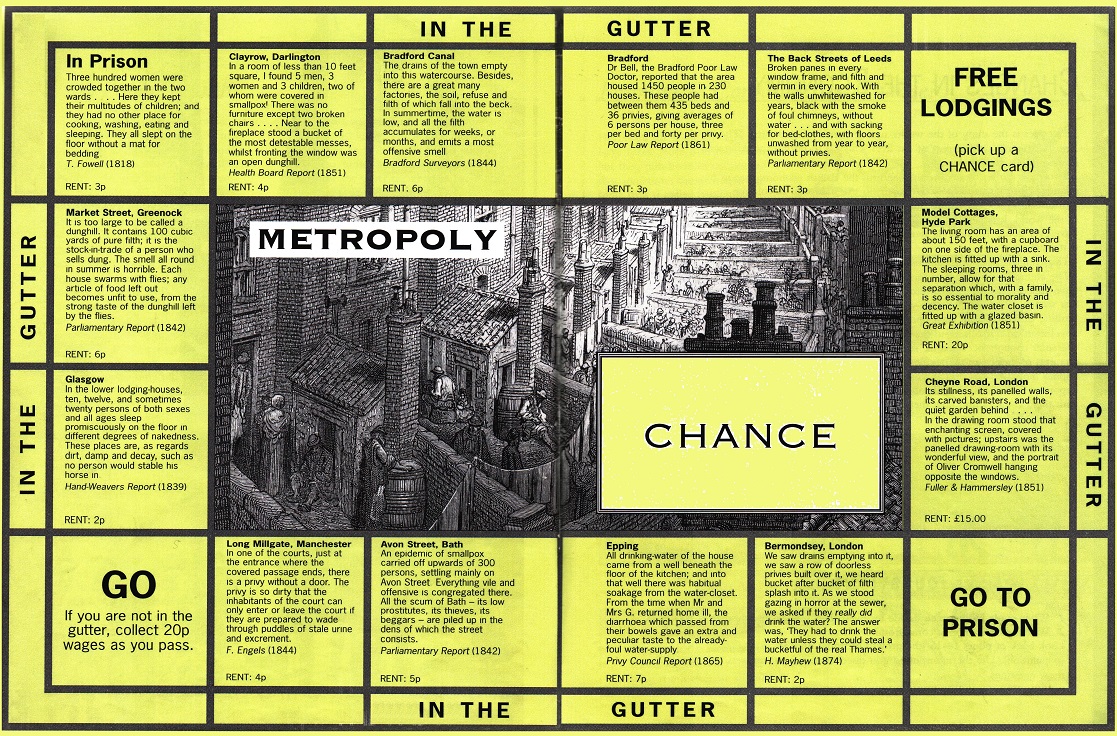
Conditions in the Towns

Introduction
One of the features of the Deomgraohic Revolution was that, whilst the general population grew rapidly, the population in the towns grew more rapidly still. The population of Bradford, for example, grew from 4,000 to 106,000 between 1801 and 1861 – an increase of 2,650 per cent in 60 years.
Increases such as these swamped the existing systems for dealing with refuse and sewage. A small village with no sewers may be dirty; a town of a million people with no sewers swims with excrement. Greedy landlords built 'back-to-back' houses, with flimsy walls, no water, no drains and, in some cases, no foundations. Middens (rubbish heaps) collected in the courtyards. There were constant complaints about the lack of privies (toilets). Sewage simply drained into the nearest river; but the river was the only place where poor people could get their water.
Poverty and high rents forced poor people to crowd together. In one house in Glasgow an investigator found several women 'imprisoned under a blanket', because the other members of the family were wearing the household's clothes at that time.
People who lived in such squalor tended to be immoral and violent. Sex and alcohol were their only ways of escaping from the dreadful world in which they existed.
Also, disease flourished in these conditions. There were epidemics of cholera (a disease of the bowels) in 1831-32, 1848-49 and 1865-66. Diseases such as typhus (a disease passed on by lice) and tuberculosis (a disease of the lungs) were endemic – they were present all the time.
Especially for the poor, it was a terrible and tragic time to live.
After you have studied this webpage, answer the question sheet by clicking on the 'Time to Work' icon at the top of the page.
Links:
The following websites will help you research further:

•
A Court for King Cholera – image analysis.
•
Why was it difficult to solve the public health problems of C19th Britain? – video.
1 An Unlucky Man
An extract from London Characters (1874) – a book written by the social researcher Henry Mayhew.
"In this house," said our friend, "when the scarlet fever was raging in the neighbourhood, the barber who was living here suffered fearfully from it, and no sooner did the man get well of this than he was seized with typhus, and scarcely had he recovered from the first attack of that, than he was struck down a second time with the same terrible disease. Since then he has lost his child from cholera, and at this moment his wife is suffering from the same disease.
The only wonder is that they are not all dead; for as the barber
sat at his meals in his small shop, if he put up his hand
against the wall behind him, it would be covered with the soil
of his neighbour's privy, soaking through the wall."


